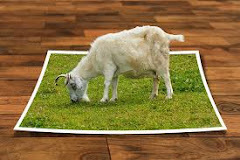Photoshop 3D Modeling Guide - Step By Step


Graphic design is a form of visual communication that involves creating and combining images, typography, and other design elements to convey a message or idea. Graphic designers are responsible for creating visual content that communicates ideas and messages to the target audience. They work in various industries, such as advertising, publishing, marketing, and digital media, to name a few. In this article, we will discuss the responsibilities of graphic designers in detail.
One of the primary responsibilities of a graphic designer is to understand the client's needs and requirements. They need to know what the client wants to achieve through their design work, what message they want to convey, who their target audience is, and what their budget is. This helps the designer to create designs that are relevant, effective, and within the client's budget.
Graphic designers need to research the industry, target audience, and competition to understand the current trends and best practices. They use this knowledge to come up with ideas and concepts that will work well for the client. They may create sketches or rough drafts to visualize their ideas and present them to the client for approval.
Once the concept is approved, the graphic designer creates design elements such as logos, typography, illustrations, and images. They use software such as Adobe Photoshop, Illustrator, and InDesign to create these elements. They also consider factors such as color, layout, and composition to create visually appealing designs.
After creating design elements, the graphic designer puts them together to create layouts and mock-ups of the final design. They work with the client to make sure that the design meets their requirements and fits their brand identity. They also make sure that the design is visually appealing and easy to read.
Once the design is complete, the graphic designer may need to make revisions and edits based on client feedback. They work with the client to make sure that the design meets their expectations and is effective in communicating the message to the target audience.
After the design is approved, the graphic designer prepares the final files for production. They may need to work with printers, publishers, or digital media professionals to make sure that the design is printed or displayed correctly. They also need to make sure that the files are in the correct format and resolution for the intended use.
Graphic designers need to stay up-to-date with industry trends and technologies to remain competitive. They need to know about new software, tools, and techniques that can help them create better designs. They also need to be aware of current design trends and best practices to create designs that are relevant and effective.
Graphic designers need to have excellent communication and collaboration skills. They work with clients, project managers, printers, and other professionals to create effective designs. They need to be able to explain their ideas and concepts clearly and receive feedback and criticism constructively.
Graphic designers need to be able to manage their time effectively and prioritize tasks. They may work on multiple projects simultaneously and need to be able to meet deadlines. They need to be able to work efficiently and prioritize tasks based on the project's importance and deadline.
Graphic designers are responsible for maintaining brand consistency across all design elements. They need to make sure that the design fits the brand's identity and values. They also need to make sure that the design is consistent across all platforms, such as print, digital, and social media.
In conclusion, graphic designers play a crucial role in creating visual content that communicates ideas and messages effectively. They are responsible for understanding the
gajab💓💓💓
ReplyDelete